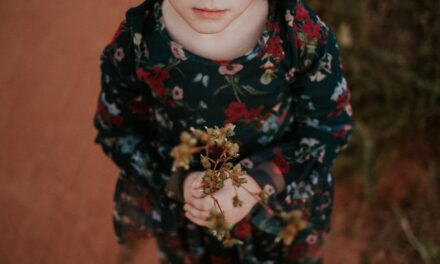Alonso Berruguete, a prominent figure in the Spanish Renaissance, was born in 1488 in the town of Paredes de Nava, located in the province of Palencia. He was the son of the esteemed sculptor Pedro Berruguete, which undoubtedly influenced his early exposure to the world of art. Growing up in an environment steeped in creativity, Alonso was destined to follow in his father’s footsteps.
His formative years were marked by a blend of familial guidance and the rich artistic traditions of the time, which laid the groundwork for his future endeavours. Berruguete’s education was not confined to his hometown; he ventured to Italy, where he immersed himself in the vibrant artistic culture of the Renaissance. This journey proved pivotal, as he studied under renowned masters such as Michelangelo and Raphael.
The exposure to their techniques and philosophies profoundly shaped his artistic vision. Berruguete’s time in Italy allowed him to absorb the principles of humanism and classical aesthetics, which he would later integrate into his own unique style upon returning to Spain.
Summary
- Alonso Berruguete was born in Paredes de Nava, Spain, and received his early artistic training in Italy.
- Influenced by the works of Michelangelo and the Italian Renaissance, Berruguete developed a unique style that combined Spanish and Italian artistic traditions.
- Berruguete received patronage from prominent figures such as King Charles V of Spain and was commissioned to create major works for cathedrals and palaces.
- Known for his mastery of wood carving and polychrome sculpture, Berruguete used innovative techniques and materials to create intricate and expressive artworks.
- Berruguete’s religious themes in his work reflected the influence of the Catholic Church and the spiritual fervour of the Spanish Renaissance.
Influences and Style
Early Influences and Training
Berruguete’s style is often described as expressive and dynamic, marked by a keen attention to detail and a deep understanding of human anatomy. One of the hallmarks of Berruguete’s style is his ability to convey emotion through form. His figures often exhibit a sense of movement and vitality, capturing the viewer’s attention with their dramatic poses and intricate expressions.
The Evolution of Renaissance Art in Spain
This emphasis on emotional depth can be traced back to his exposure to the works of Michelangelo, whose sculptural figures exude a similar sense of life and energy. Berruguete’s unique blend of Spanish fervour and Italian elegance set him apart from his contemporaries, establishing him as a leading figure in the evolution of Renaissance art in Spain.
A Distinctive Approach to Art
Berruguete’s work is a testament to the power of cultural exchange and artistic innovation. By combining the best of Spanish and Italian traditions, he created a distinctive style that continues to inspire and captivate art lovers to this day.
Patronage and Major Commissions
Throughout his career, Berruguete garnered significant patronage from both religious institutions and nobility, which played a crucial role in his artistic development. His reputation as a master sculptor and painter attracted commissions from various churches and cathedrals across Spain. Notably, he was commissioned to create altarpieces and sculptures for prominent religious sites, including the Cathedral of Toledo and the Monastery of San Benito in Valladolid.
These projects not only showcased his technical prowess but also solidified his status as a leading artist of his time. Berruguete’s relationship with patrons was often characterised by mutual respect and admiration. He understood the importance of aligning his artistic vision with the expectations of those who commissioned his work.
This adaptability allowed him to create pieces that resonated with both the spiritual aspirations of his patrons and the broader cultural currents of the Renaissance. His ability to navigate these complex relationships contributed significantly to his success and longevity as an artist.
Techniques and Materials
Berruguete’s mastery of various techniques and materials is evident in his diverse body of work. As a sculptor, he employed traditional methods such as carving wood and stone, often using local materials that imbued his pieces with a sense of authenticity. His sculptures are characterised by intricate detailing, showcasing his skill in rendering textures and forms that evoke a tactile quality.
The use of polychromy further enhanced the visual impact of his works, allowing him to create vibrant, lifelike representations. In addition to sculpture, Berruguete was also an accomplished painter. He employed techniques such as chiaroscuro to create depth and dimension in his compositions.
His paintings often feature rich colour palettes that reflect the emotional intensity of the subjects he portrayed. Berruguete’s ability to seamlessly transition between sculpture and painting demonstrates not only his versatility as an artist but also his deep understanding of the interplay between different artistic mediums.
Religious Themes in Berruguete’s Work
Religious themes permeate much of Berruguete’s oeuvre, reflecting the deeply spiritual context in which he worked. His sculptures and paintings often depict biblical figures and narratives, infused with a sense of reverence and devotion. The emotional resonance of these works is heightened by Berruguete’s ability to capture the humanity of his subjects, portraying them with a depth that invites contemplation and reflection.
One notable example is his altarpiece for the Cathedral of Toledo, which features intricate carvings that narrate key moments from the life of Christ. Berruguete’s attention to detail and expressive forms imbue these scenes with a sense of drama that engages viewers on both an intellectual and emotional level. Through his exploration of religious themes, Berruguete not only contributed to the visual language of Spanish Renaissance art but also provided a means for spiritual connection for those who encountered his work.
Portraiture and Humanism
In addition to religious subjects, Berruguete was also known for his portraiture, which reflects the humanist ideals that were gaining prominence during the Renaissance. His portraits are characterised by their psychological depth and individuality, capturing not just the physical likeness but also the essence of the sitter’s character. This focus on humanism aligns with the broader cultural movement that sought to celebrate human experience and intellect.
Berruguete’s portraits often feature figures in contemplative poses, inviting viewers to engage with their inner thoughts and emotions. This approach marks a departure from earlier portraiture that prioritised idealised representations over individual identity. By emphasising the unique qualities of each subject, Berruguete contributed to the evolution of portraiture in Spain, paving the way for future artists to explore similar themes.
Berruguete’s Impact on Spanish Renaissance Art
Berruguete’s contributions to Spanish Renaissance art cannot be overstated; he played a pivotal role in shaping the artistic landscape of his time. His innovative approach to form and emotion influenced a generation of artists who sought to emulate his style while also forging their own paths. By integrating elements from both Spanish tradition and Italian Renaissance techniques, Berruguete created a synthesis that resonated deeply within the cultural context of Spain.
His impact extended beyond mere stylistic influence; Berruguete’s exploration of human emotion and spirituality set a precedent for future artists to delve into similar themes. His ability to convey complex narratives through visual means inspired subsequent generations to push the boundaries of artistic expression. As such, Berruguete is often regarded as a bridge between medieval traditions and the burgeoning humanist ideals that characterised the Renaissance.
Travels and International Recognition
Berruguete’s travels played a significant role in shaping his artistic identity and expanding his influence beyond Spain. His time in Italy not only exposed him to groundbreaking artistic practices but also facilitated connections with other artists and intellectuals who were at the forefront of the Renaissance movement. This international exposure allowed him to bring fresh ideas back to Spain, enriching the local artistic scene.
As Berruguete’s reputation grew, so too did his recognition beyond Spanish borders. His works began to attract attention from collectors and patrons across Europe, further solidifying his status as a leading figure in Renaissance art. This international acclaim not only validated his contributions but also positioned him as an ambassador for Spanish art on the global stage.
Legacy and Influence on Later Artists
The legacy of Alonso Berruguete is evident in the works of later artists who drew inspiration from his innovative techniques and emotive style. His emphasis on humanism and individual expression resonated with subsequent generations, influencing figures such as El Greco and Francisco de Goya. These artists built upon Berruguete’s foundation, exploring similar themes while pushing artistic boundaries even further.
Berruguete’s impact can also be seen in the evolution of Spanish sculpture and painting throughout the Baroque period and beyond. His ability to convey emotion through form laid the groundwork for future artists to explore more dramatic expressions in their work. As such, Berruguete is often regarded as a seminal figure whose influence transcended his own time, leaving an indelible mark on the trajectory of Spanish art.
Rediscovery and Appreciation of Berruguete’s Work
In recent years, there has been a renewed interest in Alonso Berruguete’s work, leading to a rediscovery of his contributions to art history. Scholars and art historians have begun to reassess his significance within the broader context of Renaissance art, recognising him as a pivotal figure whose innovations deserve greater recognition. Exhibitions showcasing his works have emerged, allowing contemporary audiences to engage with his artistry in new ways.
This resurgence in appreciation has also sparked discussions about Berruguete’s role within Spanish cultural heritage. As more people become aware of his contributions, there is a growing recognition of how he helped shape not only artistic practices but also national identity during a transformative period in Spain’s history.
Key Works and Notable Contributions
Among Berruguete’s key works are several masterpieces that exemplify his artistic prowess and thematic depth. The altarpiece for the Cathedral of Toledo stands out as one of his most significant contributions, showcasing intricate carvings that narrate biblical stories with emotional intensity. Additionally, his sculptures such as “The Virgin with Child” demonstrate his mastery over form and texture, capturing both tenderness and strength.
Berruguete’s notable contributions extend beyond individual works; he played a crucial role in establishing a distinct Spanish Renaissance style that integrated local traditions with broader European influences. His ability to convey complex narratives through visual means set a precedent for future artists while enriching Spain’s cultural landscape during a pivotal moment in its history. In conclusion, Alonso Berruguete remains an essential figure within the canon of Spanish art history.
His early life experiences, influences from Italy, mastery of techniques, exploration of religious themes, commitment to portraiture, and lasting impact on subsequent generations all contribute to our understanding of this remarkable artist. As we continue to rediscover and appreciate Berruguete’s work, we gain insight into not only his individual genius but also the broader currents that shaped Renaissance art in Spain.
For those interested in exploring different artistic techniques, a related article worth checking out is Ink Drawing Styles: From Minimalist Line Art to Detailed Illustration. This article delves into the various styles and approaches artists can take when working with ink, from simple line drawings to intricate illustrations. It provides valuable insights into the creative process and can inspire artists looking to expand their skills and experiment with new mediums.


